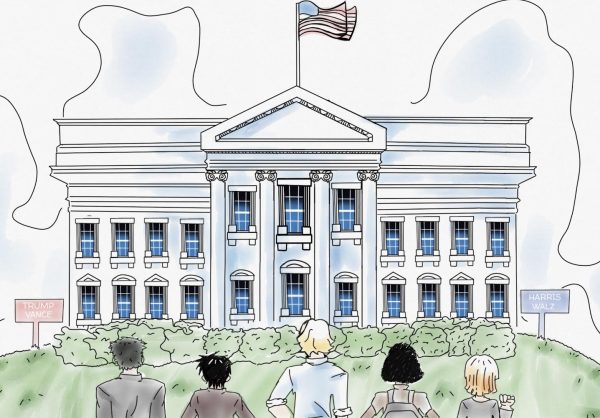Behind the Labels
With the 2010 repeal of the “Don’t Ask, Don’t Tell” policy which previously banned openly-homosexual people from serving in the military, the legalization of homosexual marriage in 2015, and recent popular media coverage on transgender people, such as Caitlyn Jenner, our society is facing an age when we can no longer ignore social issues dealing with gender and sexual identity.
We have made significant progressive steps, but we are far from done.
There are still states that do not include LGBTQ people in their nondiscrimination laws, and because those in the LGBTQ community are not included under the Equal Protection Clause, they are still legally discriminated against. Legally, they are denied loans, evicted from their apartments and are not allowed into businesses, because of their sexual orientation and/or gender identity.
However, including LGBTQ persons in these laws is not all that needs to be done. We need to remember that small changes are necessary too, because despite the media coverage, and despite the progressive steps we have taken, we are still far from ensuring equality and respect to all people. One step could be acknowledging the fact that gender binary terms (his/hers, him/her, he/she) are not appropriate for everyone, because not everyone identifies on the gender binary line. It would be a significant sign of respect if the media would allow non-binary terms, such as “they” and “their,” as singular terms. Recently, this step has gained notable ground.
Earlier this year at the Annual Copy Editors Society conference (attended by various figures in the journalism field), it was asked if it is proper to use the term “they” and “their” when referring to a singular person. This issue gained recent popularity on the internet and in media when it came to the gender pronouns of those who do not identify only as male or female.
Some argue that if the media uses “they” and “their” as gender pronouns when referring to a single person, then readers and viewers may become confused. Critics of the movement argue “they” and “their” as singular terms have not gained enough popularity to be used routinely. Others argue that “they” and “their” are widely recognized as terms referring to a group of people, and there is no need to change this. They argue that if it were changed, it would grant special treatment to a specific group of people.
Some writers have written stories without using pronouns at all in order to avoid using the binary terms for people who do not identify by them. It is both difficult and alienating. An entire group of people are denied the respect granted to those who identify as solely male or solely female.
If “they” and “their” are inducted as singular pronouns into the Associated Press Stylebook, which serves as a writing style guide for journalists, then this change will complement the other progressive steps our society has taken. Understanding the difference between gender and identity, and allowing people to be referred to by terms of their own choosing may lead to treating each person with an equal amount of respect.
To some, the argument to change the terms “they” and “their” to be both plural and singular may seem insignificant. But, the fact that our society can publicly discuss these issues assures me that we will continue to progress toward a time when each person will be treated with the kindness and respect that they deserve.












olivia | Jan 29, 2016 at 9:15 am
im actually really glad someone finally wrote about this
Sydney Shain | Jan 29, 2016 at 8:12 am
Cool story!!